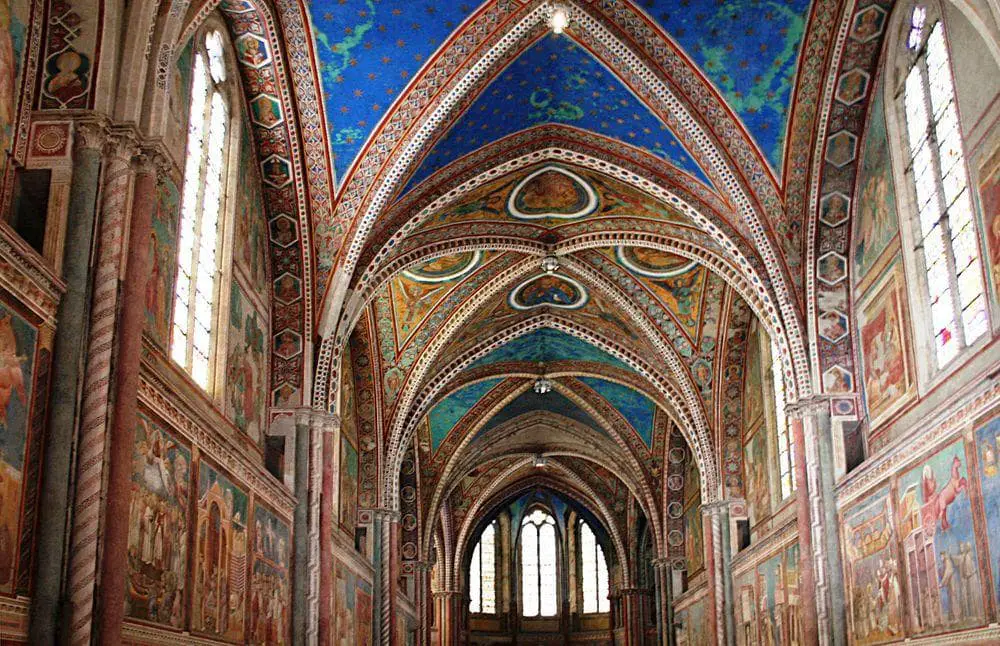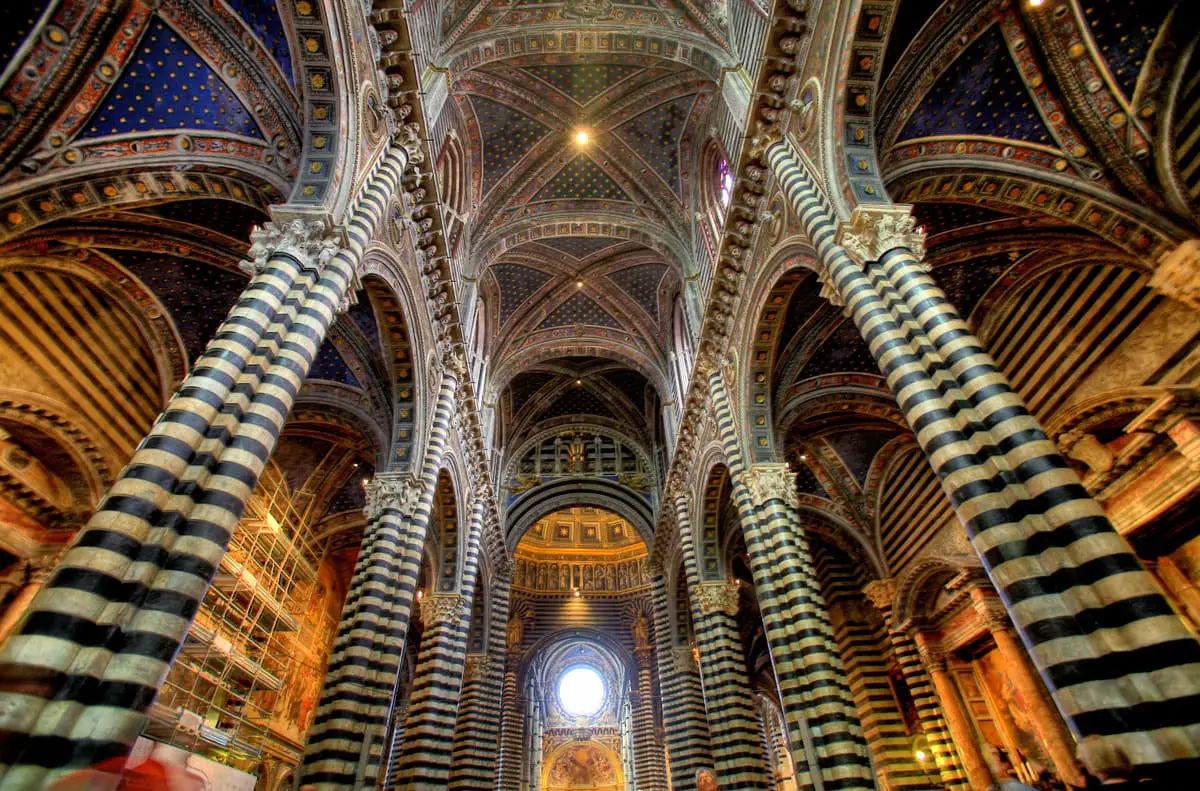World 🢖 Europe 🢖 Italy 🢖 Umbria
Churches 🢔 Religious architecture 🢔 Architectural wonders 🢔 Categories of wonders
Wonder
Assisi Basilica (Basilica of San Francesco d’Assisi)
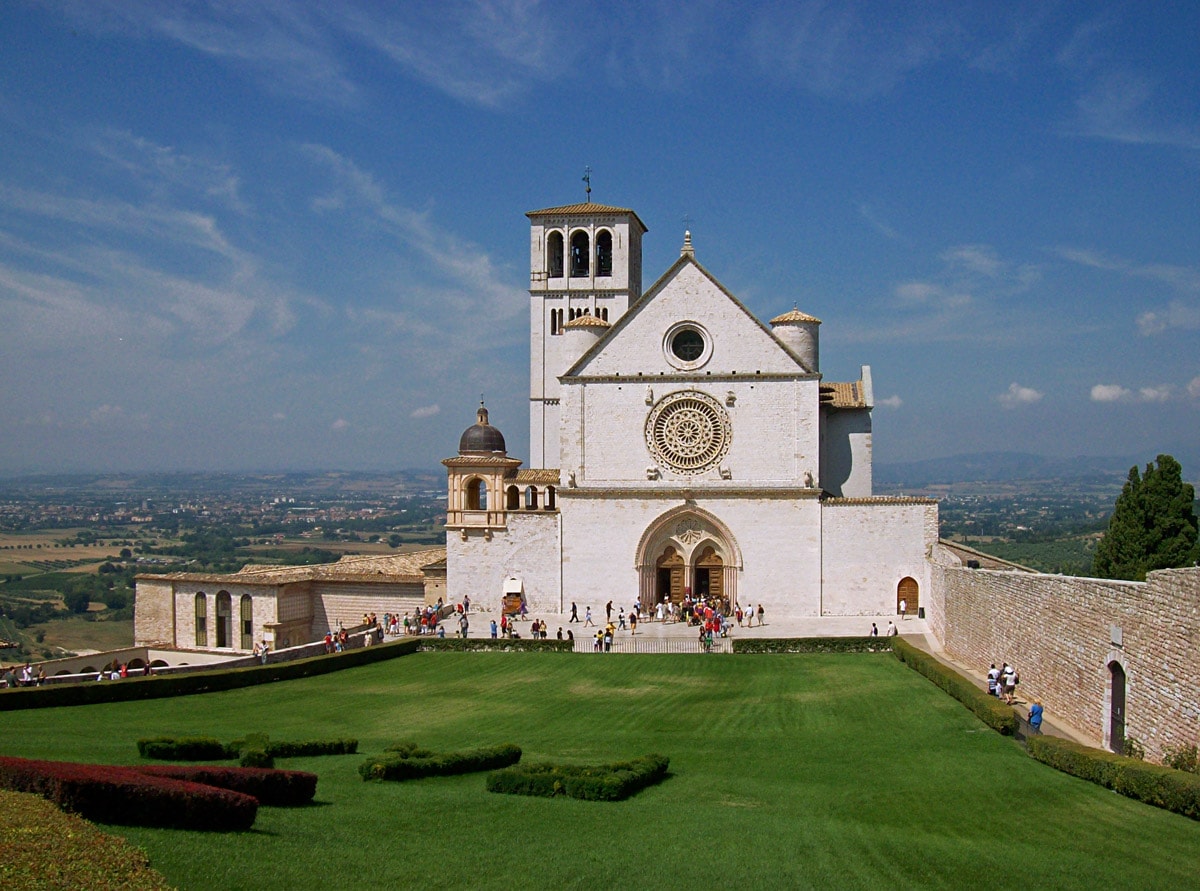
 In short
In short
The construction of the Assisi Basilica caused strife among the followers of Francis of Assisi – the magnificence and luxury of this enormous building contradicted to the celebration of powerty by St.Francis.
Nevertheless Assisi Basilica today is one of the most important church buildings worldwide, with an outstanding collection of beautiful frescoes and stained glass.
 54.8%
54.8%
GPS coordinates
Name in Italian
UNESCO World Heritage status
Architectural style
Architect
Year of construction
Branch of Christianity
Map of the site
If you see this after your page is loaded completely, leafletJS files are missing.
 In detail
In detail
Assisi
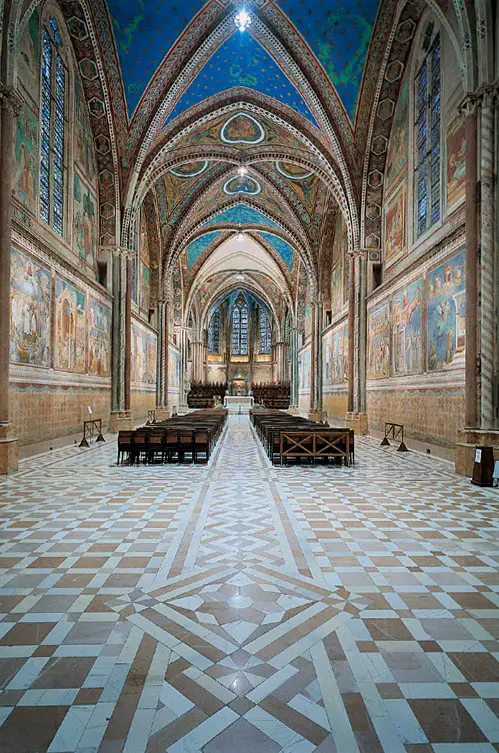
Like many medieval towns of Italy, the history of Assisi started thousands of years ago. This well-fortified town developed on the slopes of Asio hill, and, possibly was started by Umbrians, taken over by Etruscans, then Romans. Fortification walls and buildings were constructed mostly of local granite.
Today Assisi is a charming, interesting town, rich with medieval and Renaissance architecture and artworks, it has been a place of key importance for the development of European art.
As one approaches the town, there opens a view on magnificent basilica. It is devoted to the best known son of Assisi – Giovanni Francesco di Bernardone, better known as Saint Francis of Assisi.
St. Francis of Assisi

The life and character of Francis of Assisi often is compared to the life of Christ and many of his followers believed that he is the second Christ.
At his youth Francis led a life of rich, spoiled offspring of a wealthy family. But, while participating in the war, he had a vision, which changed his life. Francis deliberately started to live in poverty, he taught peace, tolerance, and love for everything that has been created by God, including animals and plants.
Francis has multiple followers and sometimes around 1210 they established a new order – Franciscan Order, which later became one of the most influential Christian orders. In a way Christianity was reborn through his efforts, religion regained its ideals and these ideals have been outstanding up to this day.
This great man died in 1226 and soon after, in 1228 was pronounced a saint by his friend, pope Gregory IX.
Construction of Assisi Basilica
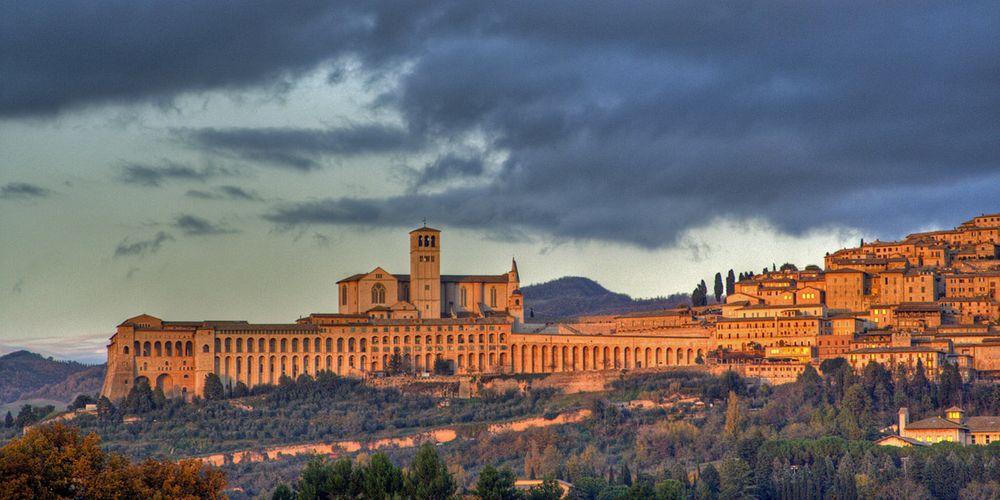
It was clear that the Franciscan order needed a convent and church. Franciscans wanted also to commemorate their inspirer by building a new church in Assisi – the city where he was born and buried.
Pope Gregory IX laid the cornerstone of the mother church of the Order of Friars Minor (one of three Franciscan orders) on July 17, 1228, the next day after the canonization of St. Francis. Construction was started in the site of the initial burial of St. Francis, on cliffside.
St. Francis wanted to be similar to Jesus, who was killed and buried outside Jerusalem, like a criminal. Francis was buried outside the city walls, in Collo d’Inferno – Hill of Hell. This was the place, where gallows were placed and criminals put to death.
Gregory IX though saw the future of Franciscans in a different way and wanted to show his support to this order through construction of a splendid church.
Construction was led by Elias of Cortona – one of the earliest followers to St.Francis. Elias of Cortona did his work with excellence and created a magnificent, ornate basilica, which was completed in 1253 – surprisingly soon, if compared to other major churches of Europe. In many ways it defined the local, Italian adaptation of Gothic style in architecture and art.
In 1239 there was built a Romanesque belltower next to the church.
Splendour or poverty?
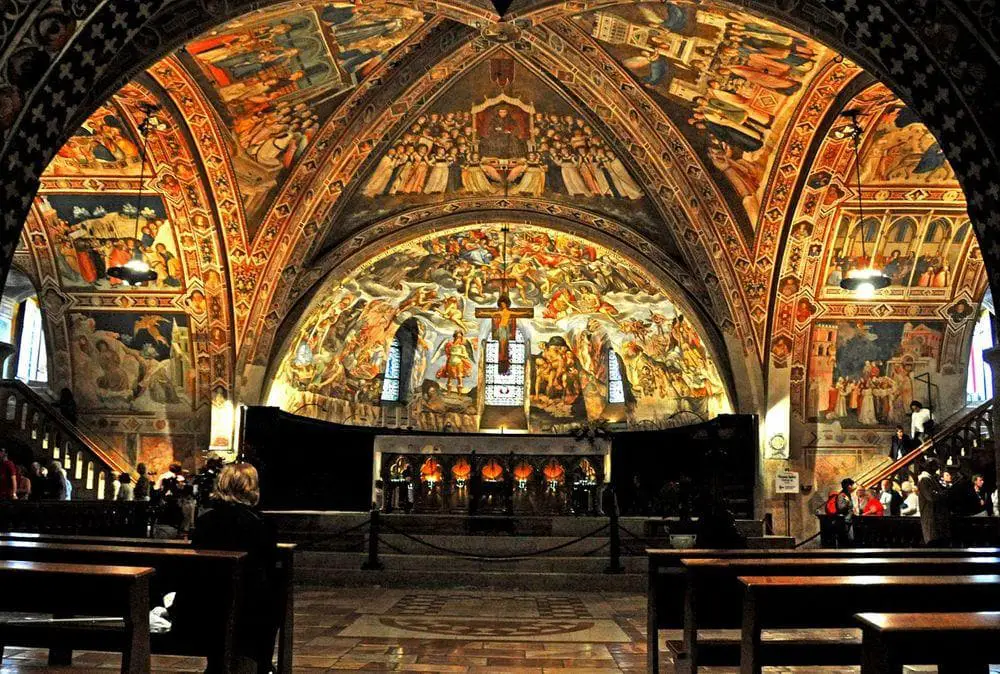
The construction of the mother church of Franciscans demonstrated the split between the followers of St. Francis – many saw that construction of such an expensive and pompous church contradicts the life and gospels of St. Francis.
This split became a reality – Franciscan Order divided. Proponents of strict rules and poverty were named zelanti and Fraticelli and were persecuted by the Church in the coming centuries.
Nevertheless this splendid building in some way defined the ruling tendency in the Franciscan Order in coming centuries. Franciscan Order became politically influential, many Franciscan churches now belong to most ornate structures worldwide (e.g. Church and Convent of San Francisco in Quito, Ecuador or Igreja de São Francisco in Porto, Portugal).
Later history of Assisi Basilica
Already in 1230 the body of St. Francis returned from its temporary place of burial (Basilica of Saint Clare of Assisi) to the basilica. Since then it became one of the most important Christian pilgrimage sites in Italy.
In 1288 the church got the status of Papal Church. Later – in 1474 – impressive colonnades were built around the square. Church in the 15th century was used as a summer residence of the popes.
Much later – in 1818 – the remnants of St. Francis were rediscovered below the floor of Assisi Basilica and some decades later there was built a crypt. Now the burial place of the saint can be visited.
Another great man in the history of Christianity – pope John Paul II – brought together 160 religious leaders of different world religions in the basilica in 1986, in the World Day of Prayer of Peace. This happened once again in 2002 when 200 religious leaders participated.
Tragedy happened in 1997 – earthquakes killed two Franciscan friars and two construction specialists inside the Assisi Basilica, the structure was heavily damaged and valuable frescoes by Giotto were lost. Some years later the basilica was renovated.
Two churches in one basilica

Basilica has an interesting peculiarity – it consists of two floors – Lower Church and Upper Church. Both have cruciform plans and each of them was consecrated as a separate church.
Lower Church and the grand monastery (Sacro Convento) at it basically were complete by 1239. Upper Basilica was constructed later – it was started after 1239 and completed in 1253 when both churches were consecrated by Pope Innocent IV.
Both Upper and Lower Churches are decorated with frescoes by many famous painters, including Cimabue, Giotto, Simone Martini, Pietro Lorenzetti, possibly Pietro Cavallini. These frescoes make this basilica an outstanding monument of Italian art.
Lower Church
This part of Assisi Basilica was designed in the earlier – Romanesque style, with semicircular cross-vaults and barrel vaults. The entrance portal though is shaped in Gothic style, with gorgeous rose window above it. Lower Church contains the crypt of St. Francis.
Here are the oldest frescoes in the basilica, made by unknown artist. On the right side are five frescoes depicting the Passion of Christ and on the left side – five scenes from the life of St.Francis. Thus Franciscans in a way interpreted St.Francis as a second Christ.
Upper Church
Upper Church has white-washed brick facade and Gothic doorway and Romanesque rose window above it. Its architecture has more Gothic forms than the architecture of Lower Church. Especially impressive are the beautiful Gothic windows with stained glass – some of the best examples of Italian glasswork from the 13th century.
The interior of the Upper Church is important monument of early Gothic art and architecture. Gorgeous is the ceiling, which is adorned with sky color frescoes with golden stars.
Assisi Basilica is included in the following list:
 Linked articles
Linked articles
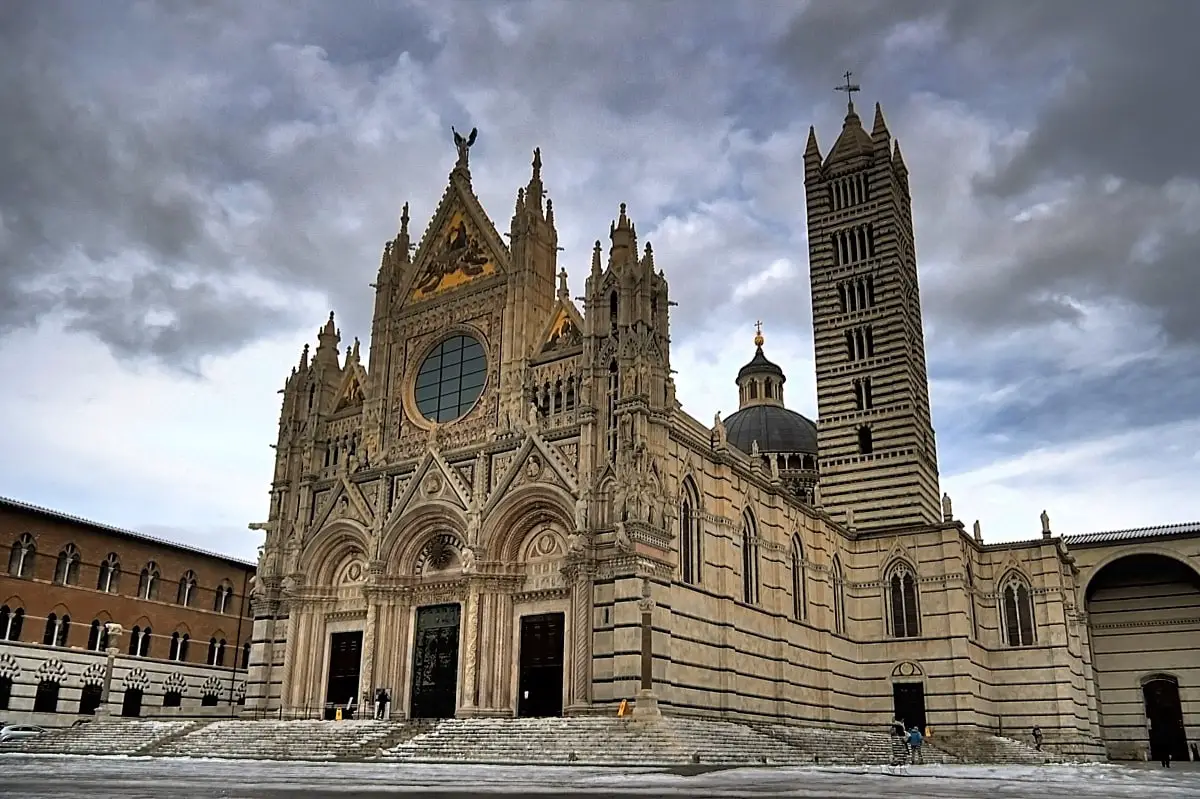
Top 10 most beautiful churches of Italy
This article lists the greatest churches of Italy: the best ones among the hundreds of very interesting buildings. Each of them has unusual and beautiful architecture, great works of art, and with an exciting history that sometimes is 2 thousand years long.
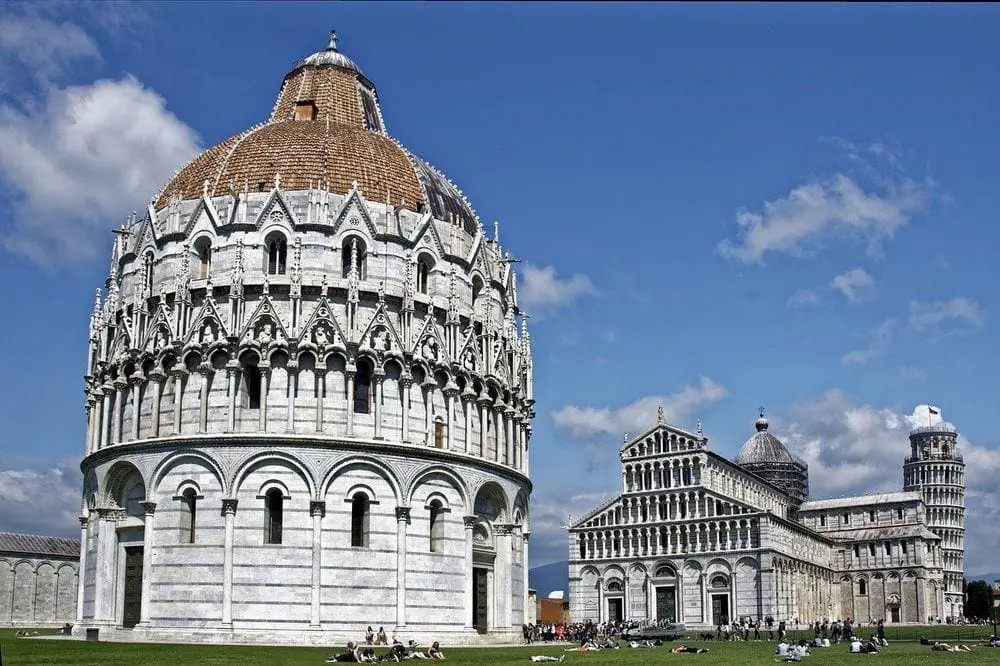
Wonders of Italy
Italy is one of the most popular destinations in the world due to its unsurpassed cultural heritage – this country has got some of the finest monuments of architecture and art in the world.
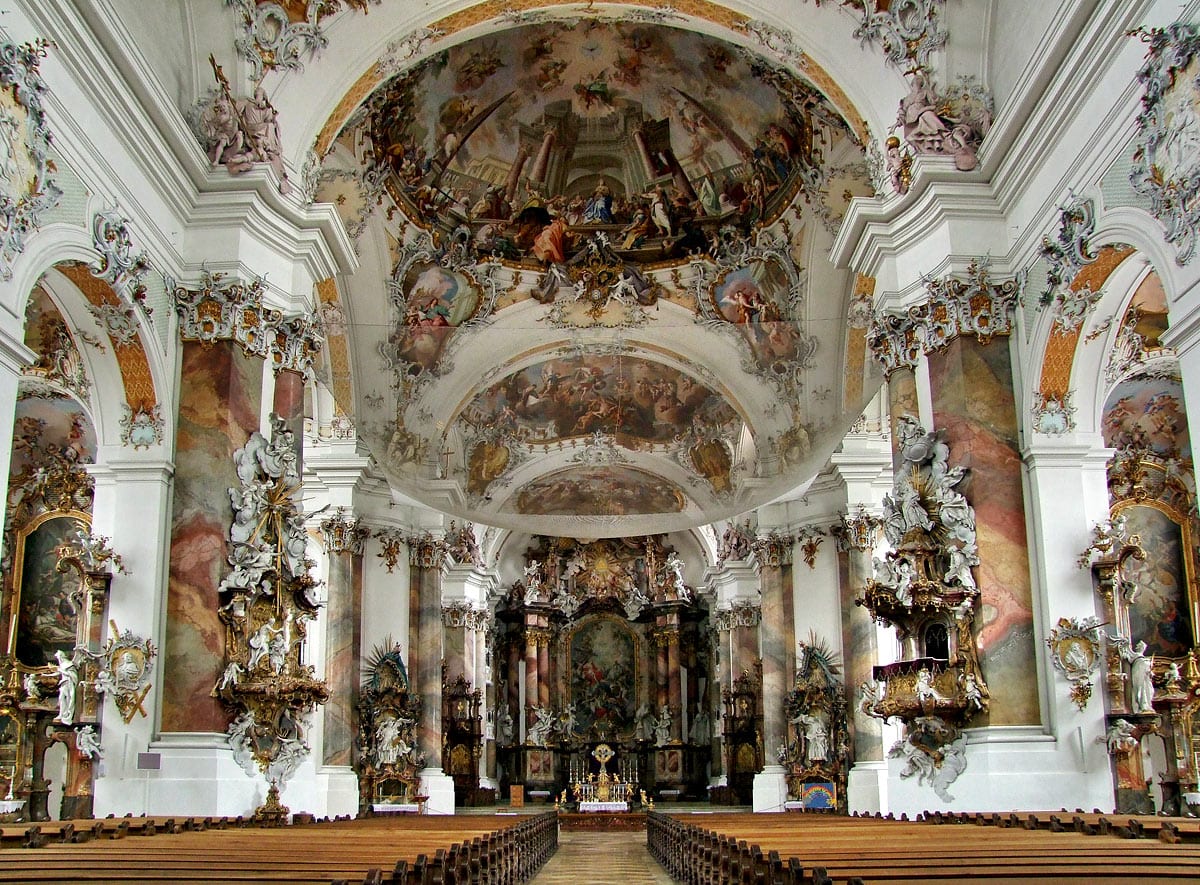
Churches
Throughout the millennia Christian churches have been the epitome of architecture and arts achievements in Western culture.
 Recommended books
Recommended books
The Basilica of St. Francis in Assisi
Founded in 1228, the Basilica of St. Francis in Assisi is the burial place of St. Francis and the mother church of the Franciscan order of monks. It is also a treasure house of art, decorated with monumental frescoes by some of the greatest painters of the thirteenth and fourteenth centuries.
Assisi: The Frescoes in the Basilica of St. Francis
During the eight hundred years since its founding, the Basilica of St. Francis has survived twenty-three recorded earthquakes. None, however, was as devastating as the most recent in September 1997. This important volume offers an incomparable opportunity to see the entire Basilica of St. Francis, including the frescoes of St. Jerome and St. Matthew, which were lost forever when they fell from the nave of the church.

